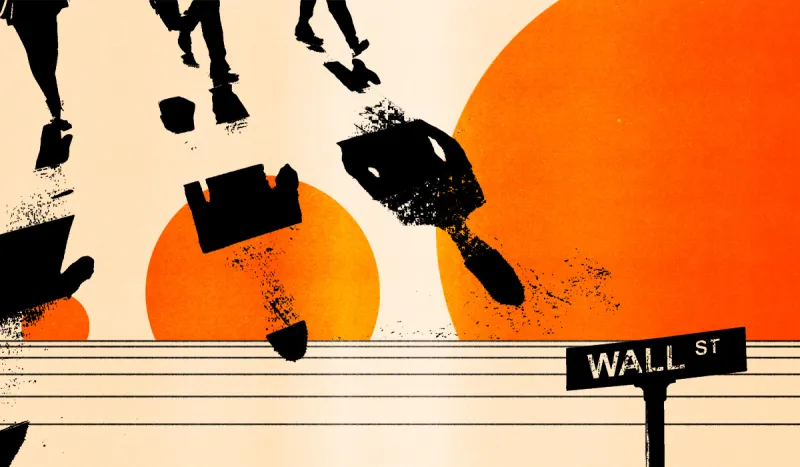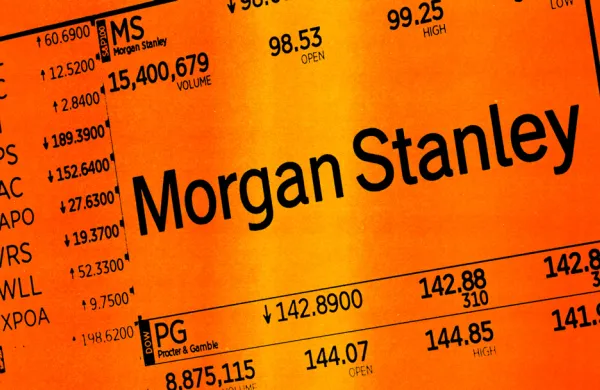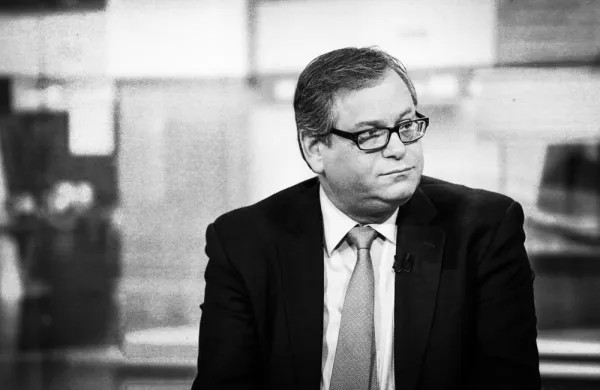
Illustrations by II; Bloomberg photos
On a summer evening in 1972, two magazine editors met over drinks to devise an idea for a story on the best analysts on Wall Street.
That year, Institutional Investor would publish the first-ever All-America Research Team: a list of 85 sell-side analysts valued by money managers for their coverage across 26 industries. And what was pitched, originally, as a bit of fun — complete with illustrations of analysts dressed up as football players — became a career-making institution.
“Research departments have restructured themselves, and investment banks have been willing to fund and resource analysts that do better in II,” says Brett Hodess, head of Americas equity research at BofA Securities. “The notoriety that II generated for analysts created a shorthand way for people to understand who is adding value for clients.”
Today, II publishes the 50th All-America Research Team, ranking analysts across 60 industry and macro sectors and recognizing an industry that has survived government investigations, market downturns, and game-changing regulations — and come out stronger than ever before.
“In the mid-’70s, when commission rates collapsed, everyone thought the sell side was going to go away,” says Nick Rosato, head of North America equity research at JPMorgan Chase & Co. “Fast-forward to the other big events, such as the tech crash of 2000, Eliot Spitzer in 2002, the global financial crisis in 2008, and the real existential crisis of MiFID II in 2018 — here we are in 2021, and the business is thriving and has evolved along with the needs of our clients.”
After 49 years, the AART remains the leading barometer of the buy side’s opinion of analysts and their firms — even as the job of adding value has gotten a lot harder. Sweeping rule changes like 2000’s Regulation Fair Disclosure have ensured that analysts no longer have privileged access to company information, and five decades’ worth of technology innovations have provided investors with access to endless amounts of news and information about companies, their industries, and the overall market.
“It used to be the case that an important part of your job as an analyst was simply providing information,” says David Adelman, director of research at Morgan Stanley. “That’s not sufficient anymore to be successful or effective. Insight and judgment have become a lot more important.”
Also more important: data and technology. It’s no longer enough to know how to build financial models to forecast future performance. Analysts today need to be data scientists, able to distill massive amounts of information into the most important takeaways for investors.
“The nature of what makes great research is based on the same principles, but the underlying tools for adding proprietary insights have become more sophisticated,” says Marc Harris, director of research at Evercore ISI. “Today data science and technology are massive components in how we look to serve clients.” Likewise, Adelman reports that “there’s a lot more technology embedded in everything our department does” at Morgan Stanley.
At JPMorgan, Rosato is leveraging technology to “reduce mundane daily tasks” and help analysts be more efficient. “We’re continuing to automate where we can to free up time for analysts to focus on value-adding work,” he explains.
It appears to be paying off: JPMorgan ranks as the No. 1 firm on the 2021 All-America Research Team, extending its streak atop the leaderboard to a sixth straight year. The first-place finish is based on the bank’s accumulation of 49 team positions, including 14 on the first team.
Second place goes to BofA Securities, with 46 total positions, including a No. 1 finish in a newly added sector for environmental, social, and governance research. And in an upset, third place goes to Morgan Stanley, which claims 41 team positions to bump Evercore ISI down to fourth.
It isn’t the only big move this year: Wolfe Research jumps to No. 6 after cracking the top ten for the first time last year, and Barclays rises from 12th place in 2020 to seventh in 2021.
According to Rosato, the key to success for JPMorgan and other top research providers is the ability to attract and retain the best people. “That’s the most critical part,” he says. As for identifying who the best people are, the JPMorgan managing director notes that “there’s no one size fits all” — but the most successful individuals tend to have “strong fundamental analyst skills and a laser focus on interacting with and impacting clients.”
Another defining trait, according to Evercore ISI’s Harris, is “a deep and unfettered intellectual curiosity.
“The work that we do in sell-side research is hard: It requires long hours, it requires tons of digging and oftentimes tons of modeling, and sometimes there are many dead ends,” he says. “The only way you can be successful is if you have a deep, deep well of intellectual curiosity.”
Morgan Stanley’s Adelman agrees. “It’s a competitive field,” he says. “No one ever became a leader in a competitive field by accident. There has to be a degree of passion and drive.”
Ultimately, Hodess concludes, being a star analyst in 2021 may not actually be all that different from being a star analyst in 1972.
“Maybe today people have more data analytical skills, and maybe they know how to do web scraping and use technology to reach out to hundreds of clients in a week instead of dozens,” he says. “Those things have changed, but the integrity, the hard work, the intellectual power and personality — and that little bit of humility to be publicly out there taking risks — those things are still the same.”
Read more:
The Hall of FamersThe New Stars
The MVPs
Remembering Tobias Levkovich





